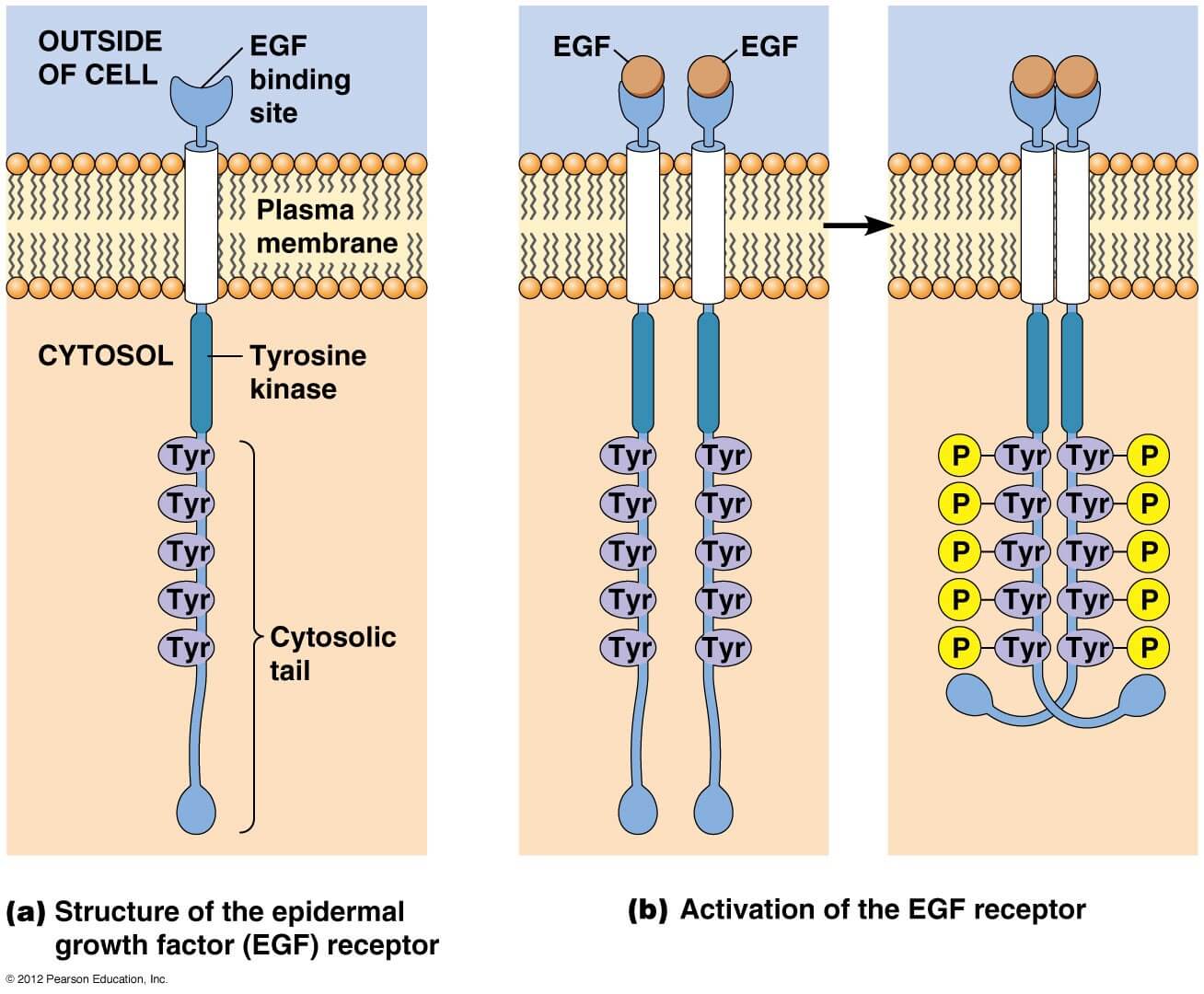Custom MemPro™ Receptor-type Kinases Services
Creative Biostructure provides custom MemPro™ gene-to-structure services for receptor-type kinases including but not limited to receptor tyrosine kinases (RTKs) and receptor protein serine/threonine kinases. Our scientists have developed a comprehensive platform for membrane protein production, computational chemistry and X-ray crystallography.
RTKs are a family of membrane-associated and high-affinity receptor proteins for numerous cytokines, polypeptide growth factors, and hormones, which play an important role in signal transduction. RTKs can immediately activate several signal transduction pathways, including inositol-phospholipid-calcium pathway and Ras pathway. When the ligand interacts with a RTK, the kinase activity is stimulated then a cascade of phosphorylation (such as MAPK cascade) can transmit the signal. Different kinases enable adding phosphate groups to amino acids that possess a hydroxyl (OH) group containing side chain. It has been reported that RTKs not only to be key regulator of cellular processes (e.g. proliferation and differentiation, cell survival and metabolism, cell migration and cell cycle control) but also to have a significant role in the development and progression of many types of cancer. The structure of RTKs have a transmembrane domain, an extracellular ligand-binding domain and a cytosolic tail that contains tyrosine residue targets of the tyrosine activity (Figure 1).
A tyrosine kinase can phosphorylate tyrosine residues and a serine-threonine kinase serine or threonine residues. RTKs are a class of receptor-type kinases that can be activated by a ligand binding to its ligand-binding domain. Upon binding, RTK forms a dimer in the membrane and are activated by auto-phosphorylation. Subsequently, adaptor proteins or intracellular proteins are able to bind with these kinases and start the signaling cascades. RTKs have several sub-families such as the ErbB Protein family, Epidermal Growth Factor Receptor (EGFR) family, Fibroblast Growth Factor Receptor (FGFR) family, Vascular Endothelial Growth Factor Receptor (VEGFR) family, RET Receptor family, Eph Receptor family and Discoidin Domain Receptor (DDR) family.
 Figure 1. A structural model of receptor tyrosine kinases.
Figure 1. A structural model of receptor tyrosine kinases.
With a deep understanding of membrane proteins in their biological context, Creative Biostructure has extensive experience in the overexpression, purification and characterization of integral membrane proteins. We can provide custom MemPro™ membrane protein gene-to-structure services. Please feel free to contact us for a detailed quote.
References:
M. A. Lemmon and J. Schlessinger (2010). Cell signaling by receptor-tyrosine kinases. Cell, 141(7): 1117-1134.
Receptor tyrosine kinase. (https://en.wikipedia.org/wiki/Receptor_tyrosine_kinase).